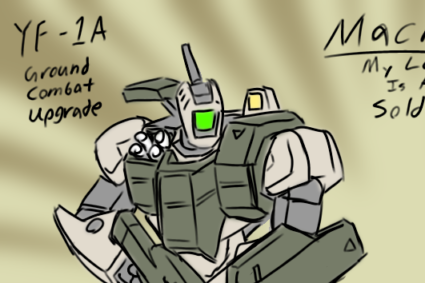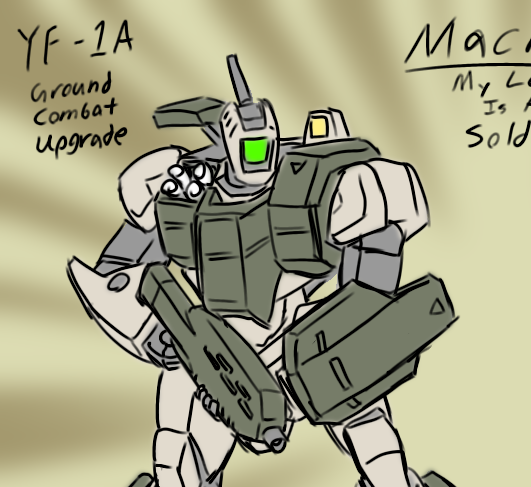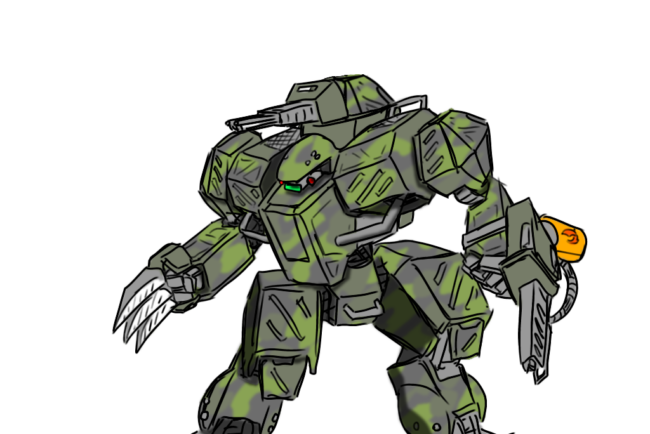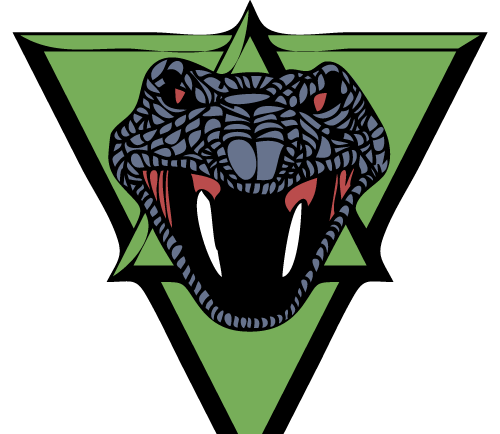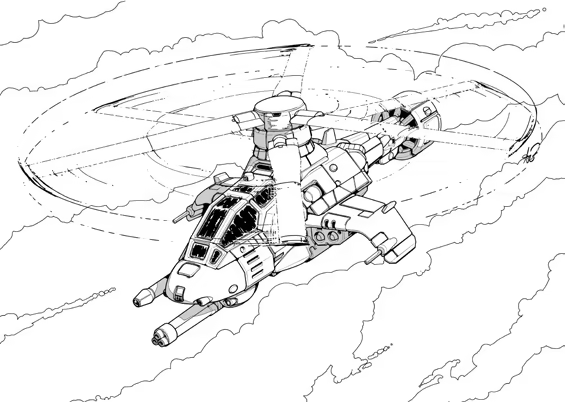
UHV-1 Series VTOL
Overview:
The UHV-1 Series VTOL, also known as the Stalwart series, while heavier than the Warrior, was physically smaller due to the fuel cell engine. The significantly more powerful engine, a 190 Fuel Cell, was much faster while allowing it to carry more armor and firepower. With a general top speed around 180kmph, the UHV-1 series can outmanoeuver most other VTOL and stay in the fight longer… at least until the fuel-cell needs to be recharged.
UHV-1
The base UHV-1 carries a long range 2-class autocannon while also being able to take out more armored targets using the mounted 6-tubes SRM.
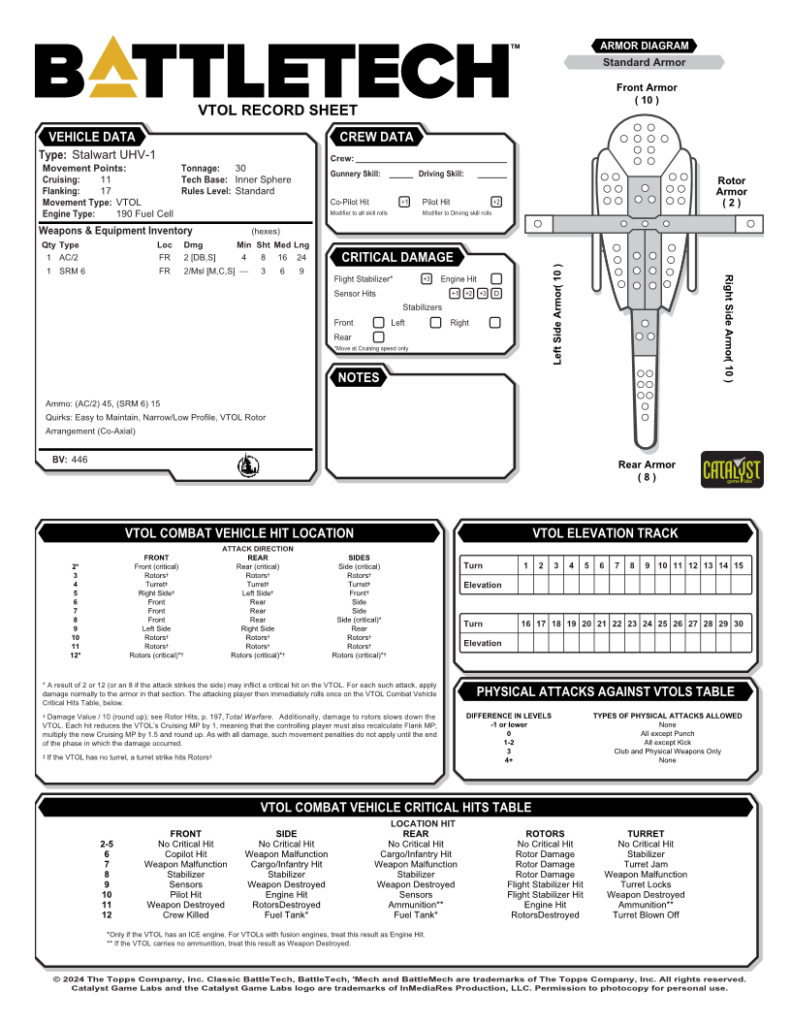
UHV-1A
The UHV-1A replaces the smaller autocannon for a larger 5-class, lowering its effective range but giving it more killing power. A small 2-tube SRM is kept on to hit threats that are at closer range, and take out light armored targets. Some commanders even loaded Inferno missiles to allow the Defender to effectively slow down incoming battlemechs.
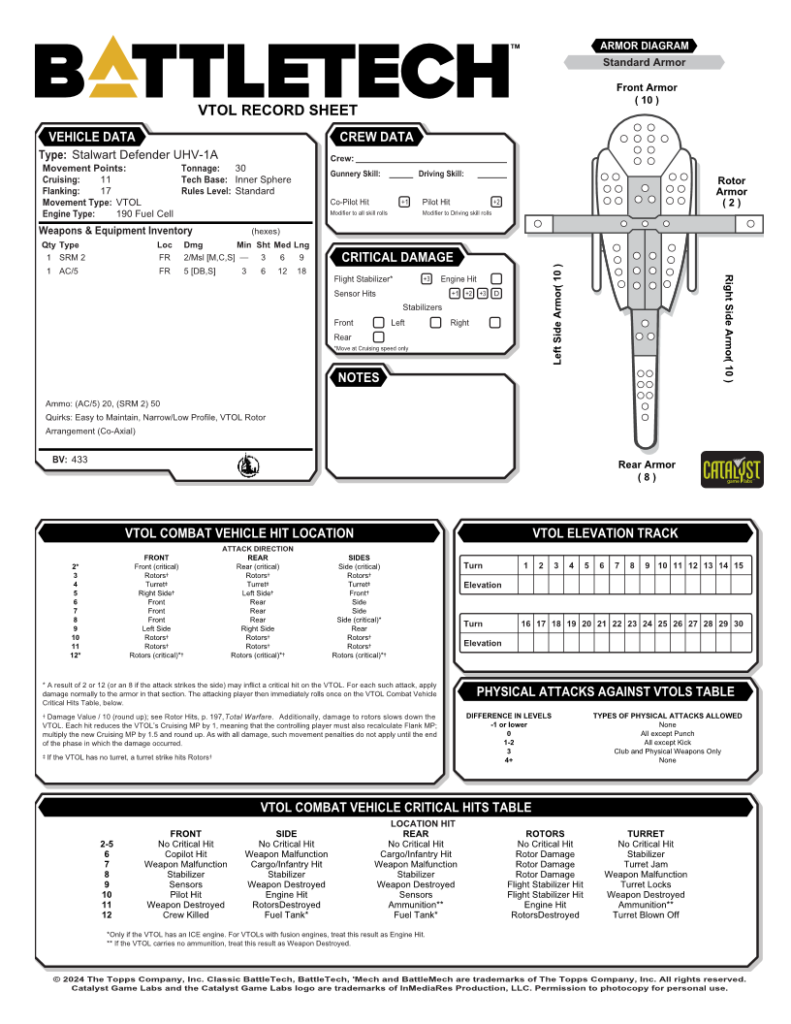
UHV-1B
The UHV-1B is a missile support platform, meant to provide long range missile support to advancing battlemech forces. In order to properly do this, a 15-rack LRM is mounted under the body and with 16 reloads, the Stalwart Hunter can remain in the fight long enough for the ground units to reach their objectives. The same 2-tube SRM as on the UHV-1A is kept, allowing the Stalwart Hunter to threaten targets which get in the minimum range of tis LRM rack.
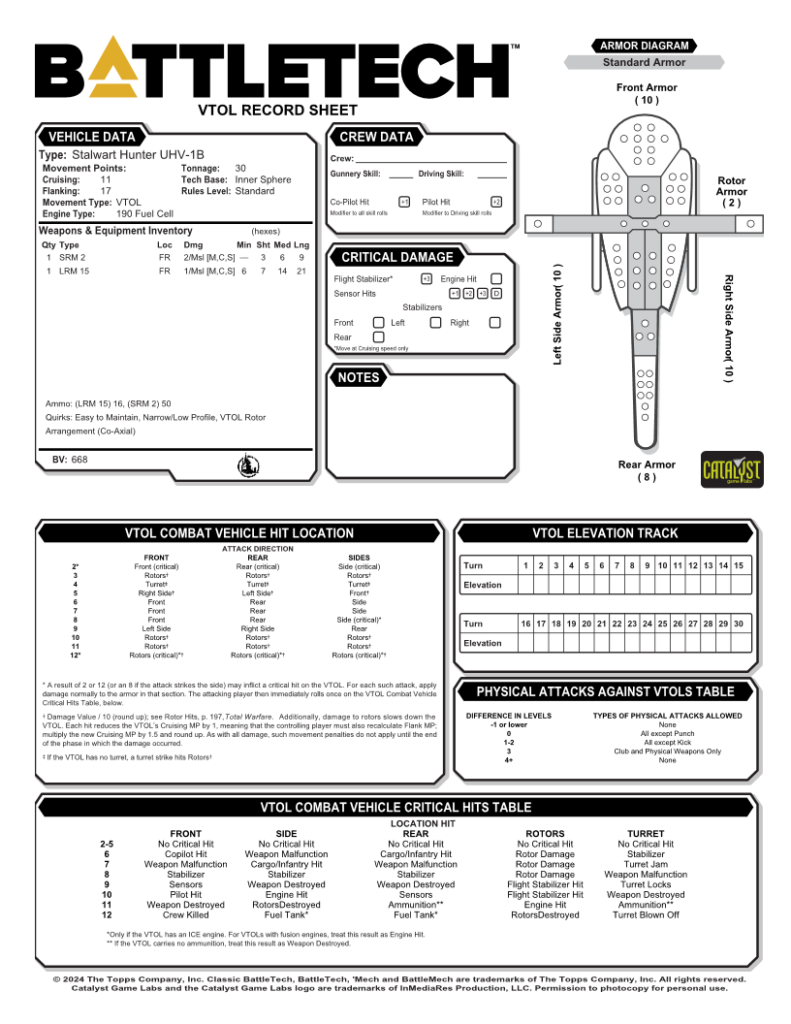
UHV-1C
The Wagoner used many of the same basic components as the Stalwart. One major difference was the midsection was replaced with a 10t cargo bay, along with tall outrigger style landing gear to allow it to carry extremely large loads semi-externally. The most famous example was when a collection of them brought a lance of Commandos over a particularly treacherous mountain pass, which they would have not been able to cross themselves.
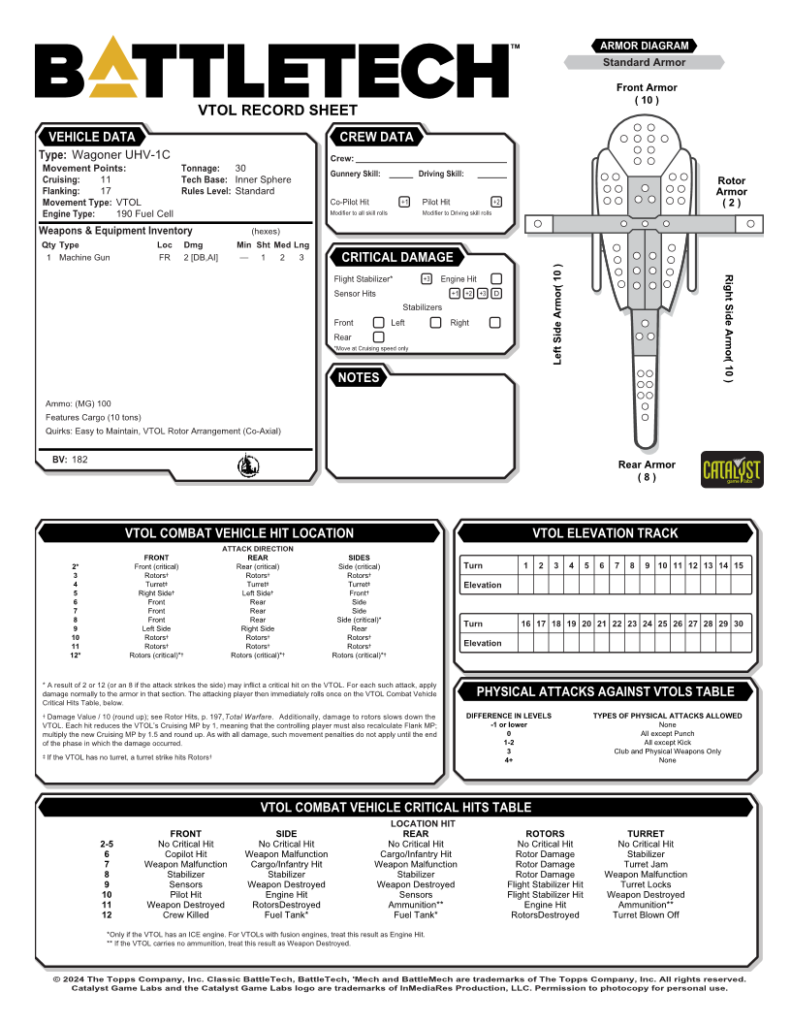
Check out the VTOL project!








